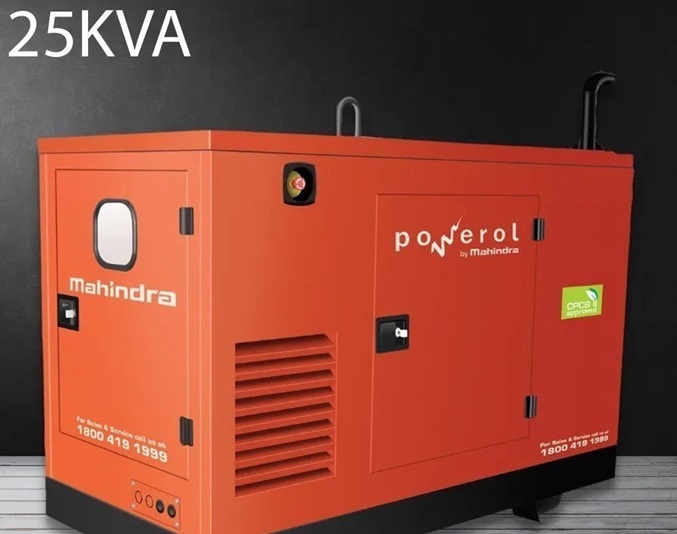When it comes to choosing the right generator, one of the first questions most buyers ask is simple: “How much fuel does it actually consume?” After all, investing in a generator isn’t just about the upfront cost, it’s about the long-term running costs too.
Fuel efficiency can become the main factor to your decision making process, especially if you’re comparing smaller capacities like a 15 kVA generator versus a 25 kVA generator.
So, let’s dive deep into real-world numbers and see what fuel consumption actually looks like.
The Basics of Fuel Consumption
Generator fuel usage depends on several factors: load (how much power you’re drawing), type of fuel, brand efficiency, and maintenance. But on average, diesel generators provide consistent and reliable data, making them the preferred choice for calculating running costs.
Think of it this way: a car guzzles more fuel when you’re driving fast uphill than when you’re driving at a steady speed. Generators work in a very similar manner. The more load you put on them, the more fuel they consume.
How Much Fuel Does a 15 kVA Generator Consume?
A 15 kVA generator is a popular choice for small businesses, clinics, retail stores, or even medium-sized homes. Here’s what the numbers look like for diesel consumption:
- At 25% load (around 3.75 kW): 1.5 – 1.8 liters per hour
- At 50% load (around 7.5 kW): 2.3 – 2.8 liters per hour
- At 75% load (around 11.25 kW): 3.5 – 3.9 liters per hour
- At 100% load (full 15 kW): 4.5 – 5 liters per hour
What does this mean in real life? If you run a 15 kVA generator for 8 hours at around 70–80% load, you’ll spend about 30 liters of diesel per day. That’s a practical benchmark for offices running lights, computers, and AC units.
How Much Fuel Does a 25 kVA Generator Consume?
Now let’s move a notch higher. A 25 kVA generator is widely used in larger homes, small hotels, workshops, and industrial sites where demand is higher. Here’s how the consumption breaks down:
- At 25% load (around 6.25 kW): 2 – 2.5 liters per hour
- At 50% load (around 12.5 kW): 3.5 – 4 liters per hour
- At 75% load (around 18.75 kW): 5 – 6 liters per hour
- At 100% load (full 25 kW): 6.8 – 7.5 liters per hour
In real-world terms, if you run a 25 kVA generator for 10 hours at 70–80% load, you’ll consume roughly 55–60 liters of diesel per day. That’s why capacity planning is key, buying a bigger generator than you need could mean burning through extra diesel unnecessarily.
15 kVA vs. 25 kVA: Which One Saves More on Fuel?
Here’s the fun part — let’s compare the two directly:
| Load | 15 kVA Generator | 25 kVA Generator |
| 25% load | 1.5–1.8 L/hr | 2–2.5 L/hr |
| 50% load | 2.3–2.8 L/hr | 3.5–4 L/hr |
| 75% load | 3.5–3.9 L/hr | 5–6 L/hr |
| 100% load | 4.5–5 L/hr | 6.8–7.5 L/hr |
What’s clear is that a 15 kVA generator is more fuel-efficient for smaller needs, while a 25 kVA generator makes sense only if your load demand is consistently high. Running a 25 kVA unit on just 25% load is like buying a bus to drive two people, not very economical.
Real-Life Example
Imagine you’re running a mid-sized boutique hotel that needs power backup for lighting, fans, AC units, and kitchen equipment. If your daily load averages 15–18 kW, a 25 kVA generator is your ideal match because it runs more comfortably at 70–80% load and won’t strain the engine.
On the other hand, if you’re a small office consuming around 8–10 kW daily, the 15 kVA generator will keep costs in check while ensuring smooth performance.
Why ESCON Recommends Smart Sizing
At ESCON Gensets, we’ve worked with businesses across industries, from healthcare to hospitality, retail to manufacturing. One of the biggest mistakes we see is companies either underestimating or overestimating their power needs.
- Too small a generator? It runs at 100% load all the time, leading to overheating and higher maintenance.
- Too large a generator? You’ll be paying for diesel you don’t actually need.
Our team helps clients assess their actual consumption patterns and recommends the right match, whether it’s a 15 kVA or a 25 kVA generator. The result? Lower running costs, better performance, and a happier balance sheet.
Final Thoughts
Fuel efficiency is not just a technical metric, it’s about saving money, optimizing performance, and ensuring sustainability. A 15 kVA generator will suit smaller setups looking for leaner fuel consumption, while a 25 kVA generator is perfect for larger operations where the load demand justifies the higher fuel burn.
At the end of the day, the smartest choice isn’t just about buying a generator. It’s about investing in the right-sized generator for your real-world needs, and that’s exactly where ESCON Gensets can help.





